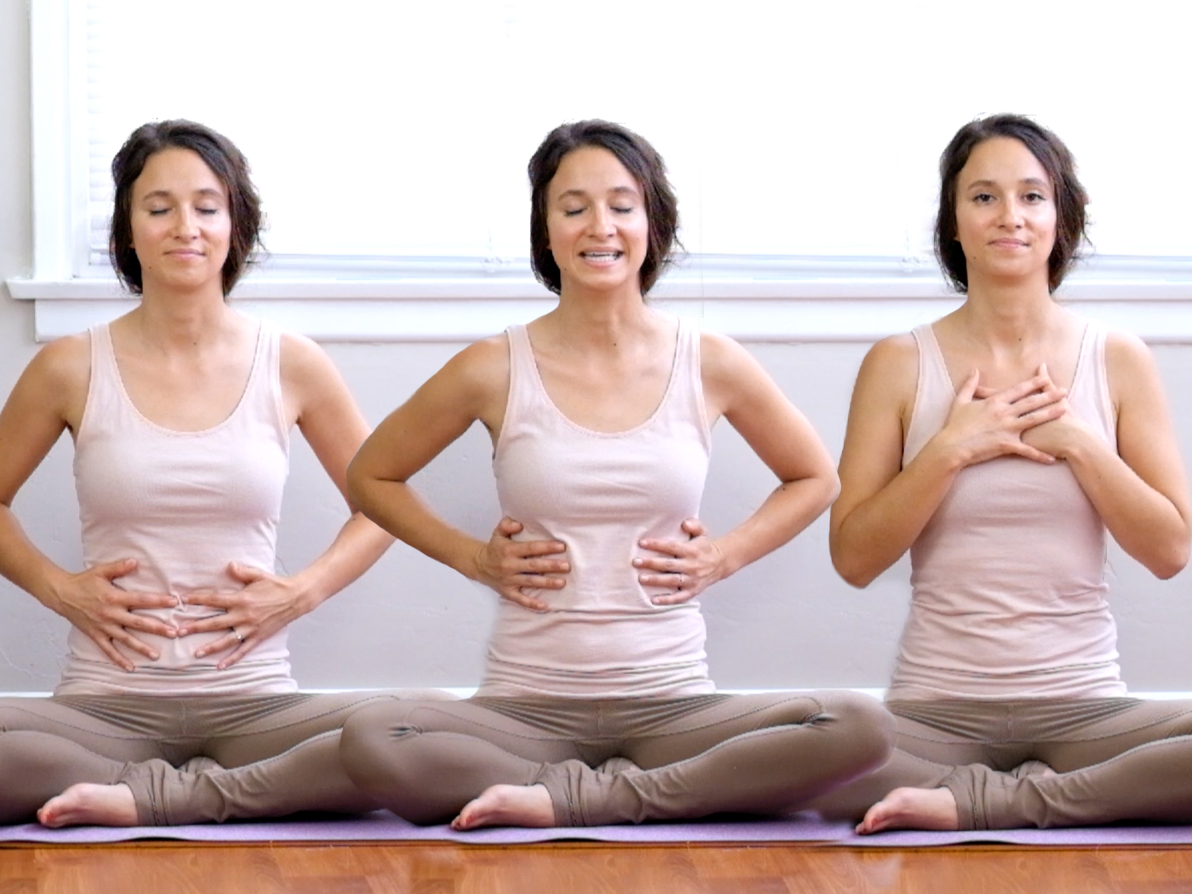What is Dirgha Pranayama in yoga?
Dirgha (deer-guh) pranayama is a yoga breathing practice that is different from others. The focus on the lungs makes this exercise fill the lungs through deep, long inhales and exhales. Breathing itself is said to calm the mind. It is a safe technique that oxygenates the blood and removes oxygen from your lungs. By simply doing a few Dirgha breaths each day will leave you feeling clear-headed and relaxed. It is also highly recommended for pregnant women and those trying to conceive a baby.
The Sanskrit name Dirgha means deep, prolonged, known as the “complete” or “three-part” breath. It focuses on filling the three chambers of the lungs – beginning with the lower lungs, then moving up through the thoracic region (the spine) and into the clavicular area (the collar bone). In yoga, this is the only breathing technique that lets you fully involve all respiratory organs. Therefore, it’s also called Full Yogic breathing or Complete breath.
How To Do Dirgha Breath – Steps
This practice strengthens and lengthens the breath, which helps us deepen and slow down the breath. This type of exercise activates the parasympathetic nervous system. The sheer focus on your organs as the air moves in and out of your body also feels relaxing.
- Begin by closing your eyes and focus your mind on your breath. Keeping attention to your breath, for example, by counting, will help you keep your mind from wandering away into thoughts. Instead, stay aware of how you inhale and exhale, slowly making them longer and more robust.
- Your spine should lift and elongate while you keep your attention to the three areas in your body – the belly, the sternum (the bone located in the middle of your chest), and the chest.
- Place your attention on your belly by putting your hand lightly over it. On the next breath, inhale through your nose and go as slowly and heavily as possible Your gut should feel like a balloon getting filled with air. Push your belly button slowly out, away from your body, and allow your stomach to fill.
- Exhale through your nose, and feel the belly get smaller as you draw the air out. Get out as much air as possible before you begin the cycle again.
- Once again, inhale until your belly is complete, and this time focus on expanding the rib cage. Your chest to start to move forward with your heart out. We are two steps into the three-step process.
- Take note of your sternum and focus the exhale beginning from your focus point, emptying the lungs down to the belly. Do this a few times before moving onto the final stage.
- This last form of inhaling and exhaling goes all the way up to your collarbone, lifting the chest and stretching out the shoulders.
- As we did in the last method, focus your attention on your collarbone and exhale down to your belly. Repeat a few times until satisfied.
It is essential during the practice not to force your lungs into overcapacity. They should feel comfortably full and not overstretched. You should also avoid strained breathing. Your breath should be relaxed, flowing in and out with ease.
Dirgha Pranayama Benefits
Practitioners of the Dirgha breath technique say that the method promotes proper diaphragm use, relaxes the mind and body, oxygenates the blood, and purges the lungs of residual carbon dioxide. When doing this breathwork, it is vital to be in good health. If you have high blood pressure, have panic attacks, or are prone to dizziness, consult your doctor first or take it very easy. Once everything is ok and you begin the practice, here’s some of what you might feel after several minutes of practicing Dirgha Pranayama:
- a clear mind
- a feeling of calmness and balance
- openness
- a deeper connection to your actual needs
- control of racing thoughts
- the digestive system gets attention
- it is perfect for pregnant women







